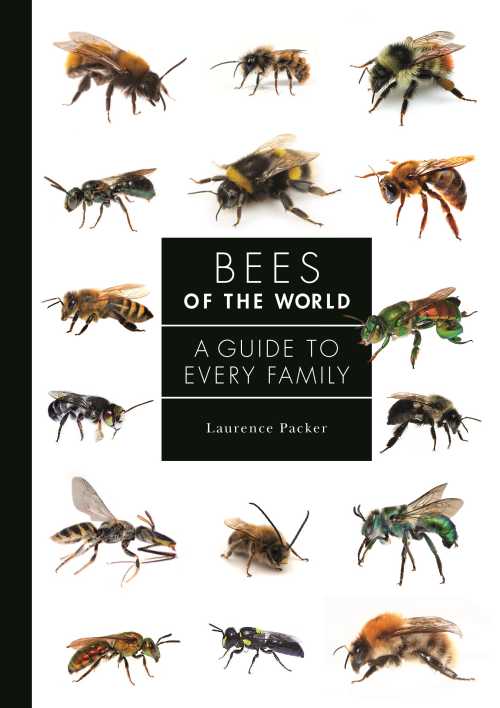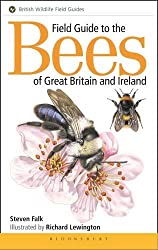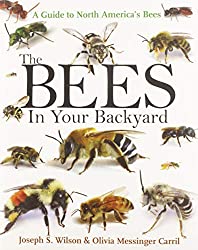The Bee Family 'Melittidae'
Worldwide, Melittidae are a relatively small family of bees, with around 14 genera and 200 species1.
The Melittidae Bee Family
Members of this bee family are short-tongued and are found in North America, Europe, Asia and Africa1.
They are known to have narrow or oligolectic foraging preferences that deviate from the gathering of nectar and pollen to feed their young.
The Melittidae includes the oldest bee fossilized bee, or possibly one of the oldest – it’s now debated following further study. Why?
It was initially proposed that a species discovered in the Florissant shales of Colorado, USA was identified as Melitta willardi, and that this was the oldest known fossilized bee ever found. It was dated to around 100 million years old.
However, a 2014 study2 then suggested that, based on the formation of the wings, the bee did not belong to the genus Melitta after all, but was closer to Andreninae (mining bees) of the Andrenidae bee family, and the authors of the study therefore describe a new genus, Andreopteryx, thus renaming the bee Andreopteryx willardi.
Nevertheless, a further 2007 study from France3 had already described Palaeomacropis eocenicus gen. nov. sp. nov, as an early fossilized bee
of the Melittidae family, which they state has similar characteristics to one
of the contemporary Macropis bees (oil collectors) within the Melittidae bee family.
Subfamilies of the Melittidae
There are 3 subfamilies within this group:
Dasypodainae
Contains 7 bee genera1.
Megonomiinae
Has 4 genera and 11 species1.
Melittinae
With species found in Africa, Madagascar, the Arabian Peninsula, and the Northern Hemisphere and includes 3 genera1.
Example genera
Macropis – Oil-collecting bees
A genus of 16 species, known for their oil collecting habits1. The US and Canada has four species4. Only one species occurs in Britain: Macropis europaea – the Yellow Loosestrife bee5.
These bee species have a particular relationship with
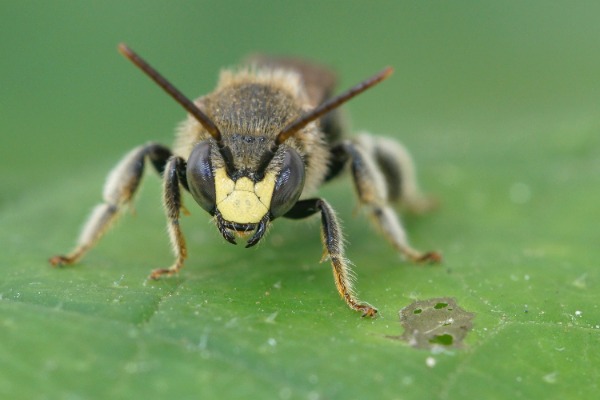 Yellow Loosestrife Bee, Macropis Europaea, male
Yellow Loosestrife Bee, Macropis Europaea, maleLoosestrife (Lysimachia) flowers1,4,5 from which females of this genera gather pollen and floral oils on their sturdy rear legs.
They have specially adapted, feathery hairs on the back legs, and hairs on the front legs for mopping up and gathering oils.
The oil is mixed with pollen for feeding the young. In fact, they are one of a handful of species that feed their young pollen and floral oils, instead of pollen and nectar, although adults will feed on other plants for nectar.
The oils are not only food for offspring, but also to line nest cells, thus
making them waterproof and protecting the larvae. In this way, Macropis are able to create
ground nests even in damp conditions where some of their favourite Loosestrife
plants thrive and spread.
Dasypoda - Pantaloon bees
Comprises 39 species1.
These species are among my favourite bees of the Melittidae family, commonly referred to as 'Pantaloon bees' because of the long hairs on the rear legs as can be seen in the case of the beautiful Dasypoda hirtipes.
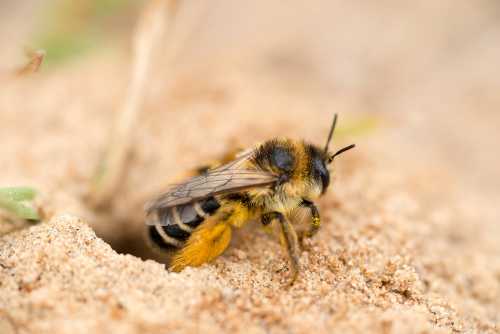 Dasypoda hirtipes - Pantaloon bee
Dasypoda hirtipes - Pantaloon beeMelitta - Blunthorne bees
These bees a oligolectic, specialising in pollen-collecting from just one or a small number of plant species1,4,5.
There are 51 species globally in this genus1, 4 species in the USA and Canada4, 4 species in the UK5.
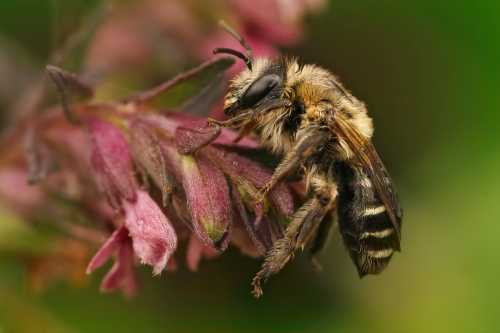
These are solitary, ground-nesting bees.
Bees Of The World - Book Review
References
- Bees of The World: A Guide To Every Family, Laurence Packer. Princeton University Press, Princeton & Oxford, 2023; ISBN: 798-0-691-22662-0.
- Dewulf A, De Meulemeester T, Dehon M, Engel MS, Michez D. A new interpretation of the bee fossil Melitta willardi Cockerell (Hymenoptera, Melittidae) based on geometric morphometrics of the wing. Zookeys. 2014;(389):35-48. Published 2014 Mar 14. doi:10.3897/zookeys.389.7076
- DENIS MICHEZ, ANDRE NEL, JEAN-JACQUES MENIER, PIERRE RASMONT, FLS, The oldest fossil of a melittid bee (Hymenoptera: Apiformes) from the early Eocene of Oise (France), Zoological Journal of the Linnean Society, Volume 150, Issue 4, August 2007, Pages 701–709.
- Wilson & Messinger-Carril; The Bees In Your Backyard, Princeton University Press 2016.
- Field Guide to Bees Of Great Britain And Ireland by Steven Falk, Bloomsbury 2015.
If you found this page helpful or interesting, I'd really be grateful if you would share it with others - if not this page, perhaps another, such as Gardening For Bees.
Thank you so much :) .
